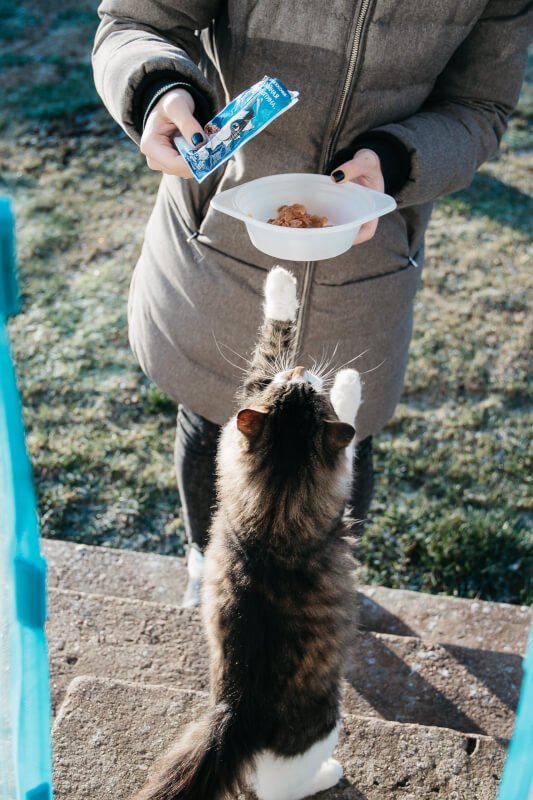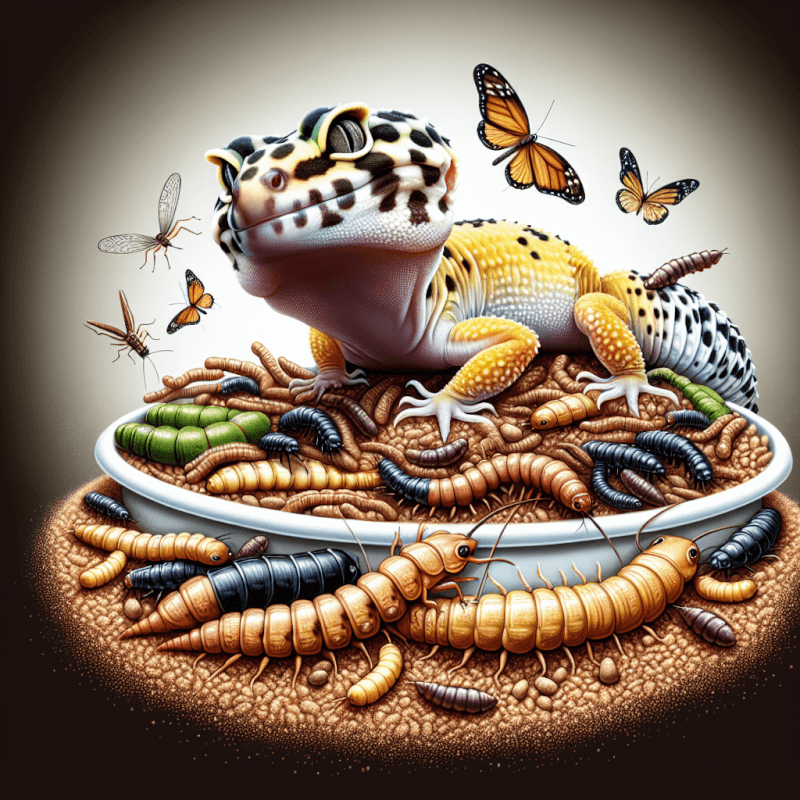If you’re a proud new owner of a leopard gecko, you may find yourself wondering how often you should be feeding your little buddy. Don’t worry, you’re not alone in this quest for knowledge! Feeding frequency is a common concern among leopard gecko owners, and in this article, we’ll explore the ideal feeding schedule to ensure your gecko stays happy and healthy. So, let’s delve into the world of leopard gecko nutrition and discover the best practices for nourishing your scaly friend!

Proper Feeding Schedule for Leopard Geckos
Leopard geckos are fascinating reptiles that require proper nutrition and a well-planned feeding schedule to thrive. Understanding their natural feeding behavior, determining their age, and considering their growth stages are crucial factors in establishing an appropriate feeding frequency. In this article, we will guide you through the process of creating a comprehensive feeding schedule for your leopard gecko, taking into account their age, nutritional requirements, and overall health.
Understanding the Natural Feeding Behavior of Leopard Geckos
Before diving into the specifics of a feeding schedule, it is important to understand the natural feeding behavior of leopard geckos. In the wild, they are nocturnal hunters, meaning they primarily hunt and feed during the night. This behavior should be taken into consideration when establishing a feeding routine for your pet gecko.
Determining the Age of Your Leopard Gecko
The age of your leopard gecko plays a significant role in determining their feeding frequency. Baby leopard geckos, also known as hatchlings, have different nutritional needs compared to juveniles and adults. To determine the age of your gecko, you can rely on their size, weight, and physical characteristics. Alternatively, you can consult a reptile veterinarian who will be able to provide a more accurate assessment.
Feeding Frequency for Baby Leopard Geckos
Baby leopard geckos require more frequent feedings due to their small size and rapid growth rate. As a general guideline, you should aim to feed them every day or every other day. Offer appropriate-sized prey insects, such as small crickets or mealworms, that are no larger than the width of their head. It is essential to ensure that the prey is properly gut-loaded and supplemented with calcium to provide optimal nutrition for your growing gecko.
Feeding Frequency for Juvenile Leopard Geckos
As leopard geckos transition from the baby stage to juveniles, their feeding frequency can be adjusted accordingly. For juveniles, it is recommended to feed them every other day or three times a week. This frequency allows them to continue their growth while also allowing their digestive system to process the food effectively. The prey size can be slightly increased to accommodate their development, but it is crucial to continue providing gut-loaded and calcium-supplemented insects to support their nutritional needs.
Feeding Frequency for Adult Leopard Geckos
Once leopard geckos reach adulthood, their feeding schedule can be further adjusted to reflect their lower metabolic rate. Adult geckos typically require feedings two to three times a week. This frequency ensures that they receive adequate nutrition without the risk of overfeeding. It is important to monitor their weight and body condition regularly to ensure they maintain a healthy size and avoid obesity-related health problems.
The Importance of a Consistent Feeding Schedule
Establishing a consistent feeding schedule for your leopard gecko is crucial for their overall health and well-being. Leopard geckos thrive on routine, and having a predictable feeding schedule helps them feel secure and reduces stress. By feeding your gecko at the same time each day, you also create a routine that makes it easier for you to monitor their appetite, digestion, and overall health.
Factors Affecting Feeding Frequency
While the guidelines mentioned earlier provide a solid foundation for your leopard gecko’s feeding schedule, it is important to remember that every gecko is unique. Several factors may influence their individual needs, such as size, metabolism, activity level, and reproductive status. It is important to observe your gecko closely and make adjustments to their feeding frequency as needed. If you notice any weight loss, lethargy, or abnormal behavior, consult a reptile veterinarian for guidance.
Signs of Overfeeding or Underfeeding
Properly gauging your leopard gecko’s feeding needs is essential to prevent both overfeeding and underfeeding. Overfeeding can lead to obesity and associated health issues, while underfeeding can result in malnutrition and stunted growth. Monitoring your gecko’s weight, body condition, and appetite can help you identify any signs of overfeeding or underfeeding. Consulting with a reptile specialist or veterinarian can provide additional guidance in maintaining an appropriate feeding schedule.
The Role of Gut Loading and Calcium Supplementation
Gut loading and calcium supplementation are crucial aspects of providing a balanced diet for your leopard gecko. Gut loading refers to feeding the prey insects a nutritious diet before offering them to your gecko. This practice ensures that the insects are packed with essential nutrients that will be passed on to your gecko when they consume them. Calcium supplementation is also vital for leopard geckos, as it helps support their bone health and prevents the development of metabolic bone disease. Dusting the insects with a calcium powder formulated for reptiles is an effective way to provide this essential mineral.
Monitoring and Adjusting the Feeding Schedule
Lastly, it is important to regularly monitor and adjust your leopard gecko’s feeding schedule as needed. Keep a record of their weight, body condition, and any changes in appetite or behavior. If you notice any fluctuations or concerns, consult a reptile veterinarian for guidance. Remember that each gecko is unique, and their feeding requirements may change over time. By staying attentive to their needs, you can ensure that your leopard gecko receives optimal nutrition and stays healthy for years to come.

Choosing the Right Food for Your Leopard Gecko
To provide your leopard gecko with a well-rounded and balanced diet, it is crucial to select the appropriate food sources. A varied diet will ensure that your gecko receives all the necessary nutrients for growth, development, and overall health. In this section, we will explore the primary food sources for leopard geckos and discuss the importance of a balanced diet.
The Importance of a Balanced Diet
A balanced diet is crucial for the health and well-being of your leopard gecko. By offering a variety of food sources, you can provide them with a wide range of essential nutrients. A balanced diet should consist of a combination of feeder insects, commercial gecko diets, and occasional supplementation with other food items. Providing a diverse diet helps prevent nutritional deficiencies and ensures that your gecko’s dietary needs are met.
Primary Food Sources for Leopard Geckos
Leopard geckos primarily rely on feeder insects as their main food source. These insects should be appropriately sized and nutritionally enriched before being offered to your gecko. Some commonly fed insects include crickets, mealworms, waxworms, and dubia roaches. It is important to purchase the insects from a reputable source and ensure they are free from any harmful pesticides or parasites.
Feeder Insects for Leopard Geckos
When selecting feeder insects for your leopard gecko, you should consider their size, nutritional content, and availability. Crickets are a popular choice due to their high protein content and relatively abundant availability. Mealworms are another suitable option, especially for geckos with certain jaw injuries or difficulties. Other feeder insects like dubia roaches and waxworms can also be included in your gecko’s diet, but it is important to feed them in moderation due to their higher fat content.
Supplementing with Commercial Gecko Diets
In addition to feeder insects, commercial gecko diets can be a valuable addition to your leopard gecko’s feeding routine. These diets are specially formulated to provide a balanced blend of nutrients and vitamins. They often come in powdered form, which can be mixed with water to create a paste consistency. Commercial gecko diets are particularly useful as a dietary supplement or occasional replacement for feeder insects, ensuring that your gecko receives a wide range of nutrients.
Avoiding Harmful Foods and Toxic Substances
While it is important to offer a variety of food sources, it is equally important to avoid harmful foods and toxic substances that can negatively affect your leopard gecko’s health. Some foods, such as insects caught in the wild or those that have been exposed to pesticides, can pose a risk to your gecko’s well-being. Additionally, certain food items, such as citrus fruits, are known to be toxic to reptiles and should be avoided.

Meal Size and Feeding Methods
When it comes to meal size and feeding methods, there are several considerations to keep in mind to ensure the health and well-being of your leopard gecko. Determining the appropriate meal size, choosing between live insects and prey substitutes, and encouraging natural hunting behavior are all important factors to consider. Additionally, maintaining adequate water consumption and hydration is vital for your gecko’s overall health.
Determining the Appropriate Meal Size
When offering prey insects to your leopard gecko, it is crucial to provide appropriately sized meals. The size of the insects should be no larger than the width of your gecko’s head to prevent any potential choking hazards. Offering prey that is too large can lead to digestive issues or injuries. It is essential to consider the size of your gecko, their age, and their ability to consume the prey comfortably when determining the appropriate meal size.
Feeding Live Insects vs. Prey Substitutes
There are two main options when it comes to feeding your leopard gecko: live insects or prey substitutes. Live insects provide a more natural hunting experience for your gecko and can help stimulate their hunting instincts. They also provide the opportunity for geckos to engage in physical activity and exercise. However, if you are uncomfortable with feeding live insects or your gecko has difficulty catching them, prey substitutes can be utilized. These substitutes come in various forms, such as freeze-dried insects or canned insects, and can be a suitable alternative for geckos that have difficulty with live prey.
Tips for Hand-Feeding and Encouraging Natural Hunting Behavior
If you prefer to hand-feed your leopard gecko or encourage their natural hunting behavior, there are a few techniques you can employ. One method is to wiggle the prey insects using a pair of tongs or forceps to mimic natural movement. This can entice your gecko to strike and capture their prey. Another technique is to place the prey insects in a small container and allow your gecko to hunt them down within a controlled environment. Providing enrichment activities, such as hiding spots or obstacle courses, can also stimulate your gecko’s hunting instincts and enhance their overall well-being.
Water Consumption and Hydration
Water consumption and hydration are vital aspects of your leopard gecko’s health. Providing a shallow dish of fresh water in their enclosure is essential to ensure they have access to clean water at all times. Leopard geckos will typically drink by licking the water from the dish or by absorbing moisture through their skin. It is important to regularly clean and refill the water dish to prevent bacterial growth or contamination. Additionally, misting the enclosure occasionally can provide an additional source of hydration, as leopard geckos may also lick water droplets from their environment.

Adjusting the Feeding Schedule for Breeding Season
Breeding season is a critical time for leopard geckos, as it requires additional nutritional considerations to support the reproductive process. In this section, we will discuss the nutritional requirements for breeding females, adjust the feeding frequency for breeding geckos, and emphasize the importance of monitoring weight and body condition during this period.
Nutritional Requirements for Breeding Females
During breeding season, female leopard geckos have increased nutritional requirements to support the development and production of eggs. It is crucial to provide a well-rounded and robust diet that includes a variety of feeder insects, commercial gecko diets, and appropriate supplementation. Feeder insects should be properly gut-loaded and dusted with calcium powder to provide essential nutrients for the female gecko and developing eggs.
Feeding Frequency for Breeding Geckos
Breeding females may require an increased feeding frequency to meet their elevated energy needs. It is recommended to offer them food every other day, in contrast to the regular feeding schedule for non-breeding geckos. This increased frequency ensures that the female gecko receives adequate nutrition to support her reproductive efforts. However, it is important to closely monitor her weight and body condition to prevent overfeeding, as excessive weight gain can lead to health complications during the breeding process.
Monitoring Weight and Body Condition
Monitoring the weight and body condition of your leopard gecko, particularly during the breeding season, is essential to ensure their well-being and reproductive success. Keeping a record of their weight and physical appearance can help you identify any significant changes or abnormalities. If you notice sudden weight loss, lethargy, or a decline in appetite, it is crucial to consult a reptile veterinarian for a thorough examination and appropriate guidance.
By following these guidelines and establishing a proper feeding schedule for your leopard gecko, you can ensure that they receive the necessary nutrition to thrive and maintain optimal health. Understanding their natural feeding behavior, selecting the right food sources, monitoring their weight and body condition, and adjusting the feeding schedule according to their age and specific needs will contribute to the long and happy life of your leopard gecko. Remember to always consult a reptile veterinarian if you have any concerns or questions regarding your pet’s feeding requirements.


